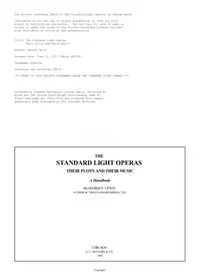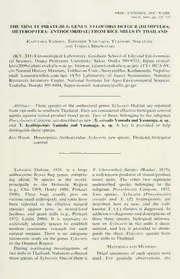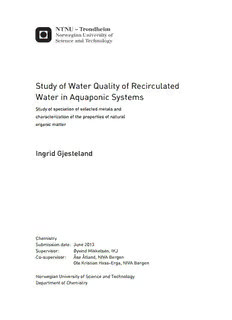
Study of Water Quality of Recirculated Water in Aquaponic Systems PDF
Preview Study of Water Quality of Recirculated Water in Aquaponic Systems
Study of Water Quality of Recirculated Water in Aquaponic Systems Study of speciation of selected metals and characterization of the properties of natural organic matter Ingrid Gjesteland Chemistry Submission date: June 2013 Supervisor: Øyvind Mikkelsen, IKJ Co-supervisor: Åse Åtland, NIVA Bergen Ole Kristian Hess-Erga, NIVA Bergen Norwegian University of Science and Technology Department of Chemistry ACKNOWLEDGEMENTS This thesis was part of a bigger project at the Norwegian Institute for Water Research (NIVA) called «Use of dissolved and particulate waste from smolt production in a recirculating system». The work was a co-operation between NIVA Bergen and the institute for Chemistry at NTNU and took place from fall 2011 until summer 2012. All the material was financed by NIVA and all the analytical analyzes were financed by NTNU. First of all I would like to thank my supervisors Øyvind Mikkelsen (NTNU) and Ole-Kristian Hess-Erga (NIVA) for great supervision throughout the whole project and help with sampling, analyzing and interpretation of data. Also a great thanks to Erik Vikingstad at NIVA for help with measurements, experimental set-up and guidance, and to Silje Wolff at CIRiS for scientific literature. I would also like to thank Syverin Lierhagen at NTNU for doing the element analysis (ICP- MS and UltraClave) on a great amount of samples. Thanks to Hardingsmolt AS and Kronheim Grønt AS for contributing with waste water (and sludge) and lettuce respectively for the experiment. A tremendous thanks to Åse Åtland at NIVA Bergen and all the employees for letting me work from their office and including me in scientific and social happenings. Last but not least I would like to thank my wonderful husband, Thomas Otto Størkson, for support, guidance and consideration during this project. Bergen, 13.june 2013 Ingrid Gjesteland Summary This thesis describes an extensive study on how water quality changes over time in a small scale recirculating system where waste water from smolt production was used to grow lettuce for commercial use. The treatment effect of lettuce on different solutions was tested and corresponding lettuce yield was evaluated. In order to enhance the treatment effect a rock wool filter was used on certain solutions. Important water quality parameters were measured every day, and the element concentration in water, lettuce and soil was analyzed. Natural organic matter in the solutions was also analyzed. The filter had no influence on either element concentration of organic matter, and observed changes were therefore attributed lettuce or soil. The organic matter increased during the experiment period, but the total concentration was too low to evaluate the character and the ability to form complexes. Phosphorus, potassium, manganese, zinc and copper decreased significantly in most of the waste water solutions, these elements are all nutrients for plants, hence they are most likely taken up by the lettuce. Despite the uptake of essential nutrients the lettuce did not grow optimally and had several signs of distress symptoms both during and at the end of the experiment. Magnesium and chloride increased significantly due to evaporation from the reservoirs. Together with the high concentration found for sodium in all the waste water solutions it was believed that the lettuce was exposed to toxic levels of salt. This was a possible explanation to why the lettuce did not grow sufficiently. The lettuce analysis showed that the concentration of most of the nutrients were not sufficient for growth. The lettuce had clear signs of nutrient deficiency such as discolored leaves and stunted growth. These symptoms were thought to be a result of both salinity and nutrient deficiency. The content of toxic metals was higher in lettuce cultivated with waste water than lettuce cultivated with a commercial nutrient solution, but lower than what is considered as limiting for growth. Considering optimal conditions for lettuce growth the pH of the waste water solutions was too high, and the electrical conductivity was higher than recommended. The rock wool filter appeared to release metals such as aluminum and iron. Both these metals are toxic to fish and it was concluded that rock wool filters should not be used in with aquaponics. One of the challenges with integrated production of salmon smolt and plants is the high content of salt in the waste water. The salt is necessary in most cases for production i of salmon smolt, but inhibits plant growth. A possible solution to this is to use a more salt tolerant plant than the one used in this experiment. If the plant is able to treat the water for nutrients and other waste products, without being depressed by the salt, re-use of the water is possible in addition to getting a marketable product. ii Sammendrag Denne masteroppgaven var en utvidet studie av hvordan vannkvalitet endres over tid i et små- skala resirkulerings anlegg der avfallsvann og slam (fast avfall) fra produksjon av smolt ble brukt til å dyrke salat for kommersielt bruk. Salats renseeffekt av ulike løsninger ble testet og tilhørende salatvekst vurdert. For å undersøke om renseeffekten kunne forbedres ved hjelp av filtrering ble noen utvalgte løsninger knyttet til et steinullsfilter. Viktige vannkvalitetsparametere ble målt hver dag, og element konsentrasjonen i vann, salat og jord ble analysert. Naturlig organisk materiale i løsningene ble også analysert. Filteret hadde ingen innvirkning på verken elementkonsentrasjon eller organisk materiale, og observerte endringer ble derfor antatt å skyldes salat eller jord. Det organiske materialet viste seg å øke gjennom perioden, men total konsentrasjonen var for lav til at det var mulig å si noe om karakter og komplekserings evne. Fosfor, kalium, mangan, sink og kobber minket signifikant i de fleste avfallsløsningene. Siden disse elementene alle er næringsstoffer for planter, ble de regnet for å være tatt opp av salaten. På tross av opptaket av essensielle næringsstoffer vokste ikke salaten normal, og viste flere sykdomssymptomer underveis og ved forsøkets slutt. Magnesium og klorid økte signifikant som følge av at vann fordamper fra reservoarene. Sammen med den høye konsentrasjonen av natrium som ble funnet i alle avfallsløsninger ble det antatt at salaten ble utsatt for toksiske nivåer av salt. Dette var en mulig forklaring på hvorfor salaten ikke vokste tilstrekkelig. Salatanalysen viste at konsentrasjonen av de fleste næringsstoffene var sub-optimal for plantevekst. Salaten hadde synlige tegn på mangelsymptomer i form av misfargede blader og stagnert vekst. Disse symptomene syntes å være et resultat av både høyt saltinnhold i løsningen og mangel på essensielle næringsstoffer. Innholdet av toksiske metaller var høyere i salat dyrket med avløpsvann enn i salat dyrket med kommersiell næringsløsning, men lavere enn det som anses å begrense vekst. I forhold til optimale forhold for plantevekst var pH i avfallsløsningene for høy, og den elektriske ledningsevne var høyere enn anbefalt. Steinullsfilteret viste seg å avgi metaller som aluminium og jern til løsningene. Både aluminium og jern er toksiske for fisk og det kan konkluderes med at steinullsfiltre er uegnet i forbindelse med akvakultur. En av utfordringene i integrert produksjon av laksesmolt og iii planter er det høye innholdet av salt i avfallsvannet. Saltet er nødvendig i produksjon av smolt, men hemmer plantevekst. En mulig løsning på dette er å benytte en mer salttolerant plante enn den som ble brukt i dette forsøket. Dersom planten kan rense vannet for næringsstoffer og andre avfallsprodukter, uten å ta skade av saltet, vil gjenbruk av vannet være mulig samtidig som en får et salgbart produkt. iv Table of Contents 1 INTRODUCTION ............................................................................................................ 1 2 THEORY ........................................................................................................................... 3 2.1 AQUACULTURE INDUSTRY ............................................................................................... 3 2.2 SALMON FARMING ........................................................................................................... 4 2.3 AQUAPONICS ................................................................................................................... 5 2.4 HYDROPONICS ................................................................................................................. 6 2.4.1 Nutrient deficiency and toxicity .............................................................................. 7 2.4.2 The nutrient film technique .................................................................................... 9 2.5 ORGANIC MATTER ......................................................................................................... 10 2.6 PHYSIOCHEMICAL PARAMETERS THAT INFLUENCE AQUAPONICS ................................... 11 2.6.1 pH ......................................................................................................................... 11 2.6.2 Temperature ......................................................................................................... 12 2.6.3 Oxygen .................................................................................................................. 12 2.6.4 Redox potential ..................................................................................................... 12 2.6.5 Conductivity and salt ............................................................................................ 13 3 MATERIALS AND METHODS ................................................................................... 14 3.1 PROJECT PARTNERS ....................................................................................................... 14 3.2 SYSTEM DESCRIPTION AND TREATMENT DETERMINATION ............................................. 15 3.3 OPERATIONAL CONTROL AND PREPARATION OF THE SYSTEM ........................................ 17 3.4 GROWTH ANALYSIS ....................................................................................................... 19 3.5 SAMPLE AND CHEMICAL ANALYSIS ................................................................................ 19 3.6 DATA ANALYSIS ............................................................................................................ 21 4 RESULTS AND DISCUSSION ..................................................................................... 23 4.1 NATURAL ORGANIC MATERIAL ...................................................................................... 23 4.2 ELEMENT TRENDS.......................................................................................................... 26 4.2.1 Decreasing trends ................................................................................................ 26 4.2.2 Increasing trends .................................................................................................. 31 4.4 LETTUCE ....................................................................................................................... 35 4.4.1 Nutrient deficiency ............................................................................................... 41 4.4.2 Nutrient toxicity: .................................................................................................. 42 4.4.3 Soil ........................................................................................................................ 43 4.5 PHYSIOCHEMICAL CHARACTERISTICS OF WATER ........................................................... 44 4.6 FURTHER STUDY ............................................................................................................ 46 5 CONCLUSION ............................................................................................................... 47 6 BIBLIOGRAPHY .......................................................................................................... 49 7 APPENDIX ...................................................................................................................... A v List of figures1 FIGURE 2.1 LIFECYCLE OF ATLANTIC SALMON (SALMO SALAR), FROM BROODSTOCK TO PROCESSING. ..................... 4 FIGURE 2.2. THE AQUAPONIC NITROGEN CYCLE ....................................................................................................... 5 FIGURE 2.3. SKETCH OF THE NUTRIENT FILM TECHNIQUE (NFT) SYSTEM. ............................................................... 9 FIGURE 3.1. EXPERIMENTAL SET-UP ...................................................................................................................... 15 FIGURE 3.2. SCHEME OF THE RECIRCULATING SYSTEM WITHOUT FILTER. LETTERS A AND B INDICATE WHERE WATER WAS SAMPLED (SAMPLING POINTS). THE UNFILTERED WASTE WATER SOLUTION (WUF), UNFILTERED SLUDGE WATER SOLUTION (SUF), AND UNFILTERED NUTRIENT SOLUTION (NUF) FOLLOWED THIS LOOP. .. 16 FIGURE 3.3. SCHEME OF THE RECIRCULATING SYSTEM WITH FILTER. LETTERS A, B AND C INDICATE WHERE WATER WAS SAMPLED (SAMPLING POINTS). THE FILTERED WASTE WATER SOLUTION (WF), FILTERED SLUDGE WATER SOLUTION (SF), AND FILTERED NUTRIENT SOLUTION (NF) FOLLOWED THIS LOOP. .......................... 16 FIGURE 4.1. CHANGE IN DOC (MG/L) WITH TIME IN THE UNFILTERED (WUF) AND FILTERED (WF) WASTE WATER SOLUTIONS AND UNFILTERED (SUF) AND FILTERED (SF) SLUDGE WATER SOLUTIONS OVER THE 28 DAYS EXPERIMENT. (N=9). .................................................................................................................................... 24 FIGURE 4.2. TREND FOR PHOSPHORUS (DOTTED LINE) AND POTASSIUM (BLACK LINE) IN THE FILTERED WASTE WATER SOLUTION (WF) OVER THE 28 DAY EXPERIMENT (N=9). HIGHEST CONCENTRATION SET TO 100 %. CHANGE OF RESERVOIR INDICATED BY VERTICAL, DOTTED LINES. ............................................................... 27 FIGURE 4.3. TREND FOR MANGANESE (BLACK LINE), ZINC (DOTTED LINE) AND COPPER (GREY LINE) IN THE FILTERED WASTE WATER SOLUTION (WF) OVER THE 28 DAY EXPERIMENT (N=9). HIGHEST CONCENTRATION SET TO 100 %. CHANGE OF RESERVOIR INDICATED BY VERTICAL, DOTTED LINES. ........................................ 29 FIGURE 4.4. TREND FOR CHLORIDE IN THE UNFILTERED (DOTTED LINE) AND FILTERED (GREY LINE) NUTRIENT SOLUTIONS (NUF/NF) OVER THE 28 DAY EXPERIMENT (N=9). HIGHEST CONCENTRATION SET TO 100 %. CHANGE OF RESERVOIR INDICATED BY VERTICAL, DOTTED LINES. ............................................................... 30 FIGURE 4.5. TREND FOR IRON IN THE UNFILTERED (DOTTED LINE) AND FILTERED (GREY LINE) NUTRIENT SOLUTIONS (NUF/NF) OVER THE 28 DAY EXPERIMENT (N=9). HIGHEST CONCENTRATION SET TO 100 %. CHANGE OF RESERVOIR INDICATED BY VERTICAL, DOTTED LINES. ............................................................... 31 FIGURE 4.6. TREND FOR CHLORIDE (GREY LINE) AND MAGNESIUM (DOTTED LINE) IN THE UNFILTERED NUTRIENT SOLUTION (NUF) OVER THE 28 DAY EXPERIMENT (N=9). HIGHEST CONCENTRATION SET TO 100 %. CHANGE OF RESERVOIR INDICATED BY VERTICAL, DOTTED LINES. ............................................................................. 33 FIGURE 4.7. HARVESTED FRILLICE LETTUCE (LACTUCA SATIVA VAR. CRISPA) FROM KRONHEIM GROWN PARALLEL TO THE EXPERIMENT. .................................................................................................................................... 35 FIGURE 4.8. HARVESTED FRILLICE LETTUCE (LACTUCA SATIVA VAR. CRISPA) FROM THE UNFILTERED (TOP) AND FILTERED (BOTTOM) NUTRIENT TREATMENTS (NUF/NF) ON DAY 28 OF THE EXPERIMENT. .......................... 36 FIGURE 4.9. HARVESTED FRILLICE LETTUCE (LACTUCA SATIVA VAR. CRISPA) FROM THE UNFILTERED (TOP) AND FILTERED (BOTTOM) WASTE WATER TREATMENT (WUF/WF) ON DAY 28 OF THE EXPERIMENT. .................. 37 FIGURE 4.10. HARVESTED FRILLICE LETTUCE (LACTUCA SATIVA VAR. CRISPA) FROM THE UNFILTERED (TOP) AND FILTERED (BOTTOM) SLUDGE WATER TREATMENT (SUF/SF) ON DAY 28 OF THE EXPERIMENT. .................... 38 FIGURE 4.11. AMOUNT (%) OF MACRONUTRIENTS IN LETTUCE FROM THE UNFILTERED (WUF) AND FILTERED (WF) WASTE WATER SOLUTIONS, UNFILTERED (SUF) AND FILTERED (SF) SLUDGE WATER SOLUTIONS, AND UNFILTERED (NUF) AND FILTERED (NF) NUTRIENT SOLUIONS. RECOMMENDED AMOUNT (R) IS INCLUDED. MACRONUTRIENTS ARE REPRESENTED BY PHOSPHORUS (DARK GREY), POTASSIUM (BLACK DOTS), SULPHUR (LIGHT GREY), CALCIUM (WHITE) AND MAGNESIUM (GRID). ......................................................................... 41 FIGURE 4.12. FRILLICE LETTUCE (LACTUCA SATIVA VAR. CRISPA) CULTIVATED WITH WASTE WATER WITH ADDED NITRATE. DAY 1 (RIGHT), DAY 5 (MIDDLE) AND DAY 10 (LEFT). ................................................................... 42 FIGURE 4.13. PH MEASUREMENTS FROM ALL SIX SOLUTIONS (N=20). CHANGE OF RESERVOIR INDICATED BY VERTICAL, DOTTED LINES. TRIANGLES ARE UNFILTERED (CLOSED) AND FILTERED (OPEN) WASTE WATER (WUF/WF), CIRCLES ARE UNFILTERED (CLOSED) AND FILTERED (OPEN) SLUDGE WATER (SUF/SF), AND DIAMONDS ARE UNFILTERED (CLOSED) AND FILTERED (OPEN) NUTRIENT SOLUTION (NUF/NF). RECOMMENDED PH VALUE IS INDICATED BY HORIZONTAL, GREY LINE. ....................................................... 45 FIGURE 4.14. ELECTRICAL CONDUCTIVITY MEASUREMENTS IN ALL SIX RESERVOIRS (N=20). CHANGE OF RESERVOIR INDICATED BY VERTICAL, DOTTED LINES. TRIANGLES ARE UNFILTERED (CLOSED) AND FILTERED (OPEN) WASTE WATER (WUF/WF), CIRCLES ARE UNFILTERED (CLOSED) AND FILTERED (OPEN) SLUDGE WATER (SUF/SF), AND DIAMONDS ARE UNFILTERED (CLOSED) AND FILTERED (OPEN) NUTRIENT SOLUTION (NUF/NF). RECOMMENDED PH VALUE IS INDICATED BY HORIZONTAL, GREY LINE. .................................... 45 1 Figure 2.1 is retrieved from (Cermaq, 2010), Figure 2.2 is retrieved from, (Aquaponics, 2012) and Figure 2.3 is retrieved from (Hydroponics, 2008) vi List of tables TABLE 2.1. TOXIC VALUES (MG/L) AND SENSITIVITY OF SODIUM AND CHLORIDE TO PLANTS. CONDUCTIVITY RANGE (µS/CM) OF TOXICITY/SENSITIVITY. .................................................................................................. 13 TABLE 3.1 INITIAL COMPOSITION OF WASTE WATER AND SLUDGE FROM HARDINGSMOLT, AND INITIAL COMPOSITION OF SOIL FROM KRONHEIM GRØNT .......................................................................................... 18 TABLE 3.2. OVERVIEW OF SAMPLES, SAMPLING PURPOSE, SAMPLING DAYS, SAMPLING POINT, SAMPLE TREATMENT, TOTAL OF SAMPLES PER DAY, TOTAL OF WATER SAMPLES AND THE TOTAL OF ALL SAMPLES COLLECTED. ... 22 TABLE 4.1. START AND END CONCENTRATION (MG/L) OF TOTAL, DISSOLVED AND PARTICULATE MATTER IN THE UNFILTERED (WUF) AND FILTERED (WF) WASTE WATER SOLUTIONS, UNFILTERED (SUF) AND FILTERED (SF) SLUDGE WATER SOLUTIONS, AND UNFILTERED (NUF) AND FILTERED (NF) NUTRIENT SOLUIONS. ............... 23 TABLE 4.2. ELEMENTAL COMPOSITION OF THE UNFILTERED (WUF) AND FILTERED (WF) WASTE WATER SOLUTIONS, UNFILTERED (SUF) AND FILTERED (SF) SLUDGE WATER SOLUTIONS, AND UNFILTERED (NUF) AND FILTERED (NF) NUTRIENT SOLUIONS (FILTERED SAMPLES, 0.45µM). START AND END CONCENTRATION (µG/L) OF ELEMENTS, DIVIDED INTO MACRO-, MICRO- AND TOXIC ELEMENTS. RECOMMENDED VALUES (R) FOR OPTIMAL GROWTH OF LETTUCE IS ALSO INCLUDED. ............................................................................... 28 TABLE 4.3. MEASUREMENTS OF DIFFERENT PARAMETERS OF GROWTH OF HARVESTED FRILLICE LETTUCE (LACTUCA SATIVA VAR. CRISPA) FOR THE UNFILTERED (WUF) AND FILTERED (WF) WASTE WATER SOLUTIONS, UNFILTERED (SUF) AND FILTERED (SF) SLUDGE WATER SOLUTIONS, AND UNFILTERED (NUF) AND FILTERED (NF) NUTRIENT SOLUIONS AT THE END OF THE EXPERIMENT (N=3). CONTROL PLANT FROM KRONHEIM GRØNT IS INCLUDED. ................................................................................................................. 39 TABLE 4.4. CONCENTRATION OF ELEMENTS IN LETTUCE (DRY WEIGHT) FROM THE UNFILTERED (WUF) AND FILTERED (WF) WASTE WATER TREATMENTS, UNFILTERED (SUF) AND FILTERED (SF) SLUDGE WATER TREATMENTS, AND UNFILTERED (NUF) AND FILTERED (NF) NUTRIENT TREATMENTS AT THE END OF THE EXPERIMENT DIVIDED INTO MACRO-, MICRO- AND TOXIC ELEMENTS (N=3). RECOMMENDED VALUES (R) OF ELEMENT CONCENTRATION IN PLANT DRY MATTER FOR OPTIMAL GROWTH IS INCLUDED. ............................ 40 TABLE 4.5. AVERAGE VALUE OF MEASURED PHYSIOCHEMICAL PARAMETERS MEASURED IN THE UNFILTERED (WUF) AND FILTERED (WF) WASTE WATER SOLUTIONS, UNFILTERED (SUF) AND FILTERED (SF) SLUDGE WATER SOLUTIONS, AND UNFILTERED (NUF) AND FILTERED (NF) NUTRIENT SOLUIONS (N=20). ................ 44 vii
Description:The list of books you might like

The 48 Laws of Power

Haunting Adeline

$100m Offers

Atomic Habits James Clear
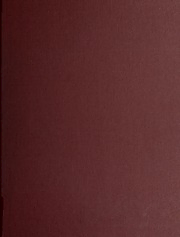
Statutes of the Province of Ontario 2006 pt. 3
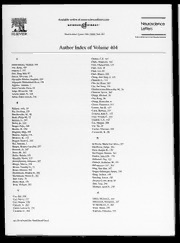
Neuroscience Letters 2006: Vol 404 Index

Chroniques des vampires - Tome 2 - Lestat le Vampire
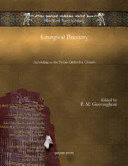
Liturgical Breviarty: According to the Syrian Orthodox Church
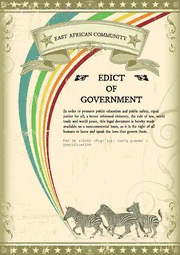
EAS 98: Curry powder – Specification
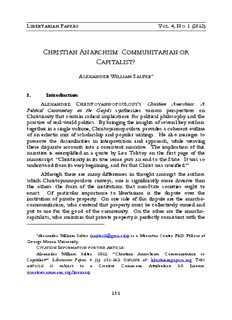
C ANARCHISM COMMUNITARIAN OR CAPITALIST - Libertarian Papers
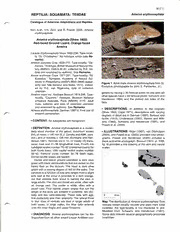
Ameiva erythrocephala
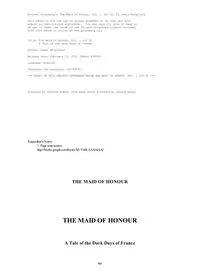
Maid of Honour A Tale of the Dark Ages Vol I
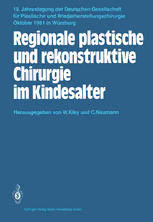
Regionale plastische und rekonstruktive Chirurgie im Kindesalter
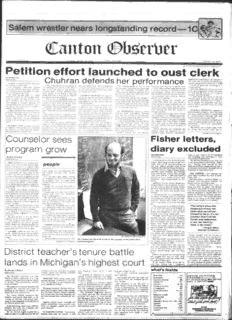
C anton (©bsferVitr
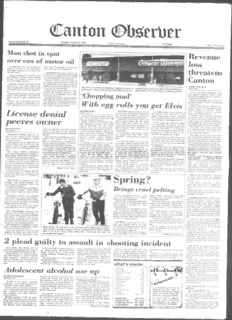
C anton O bsierber
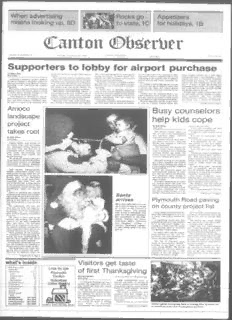
C anton €>bserUer Supporters to lobby for airport purchase
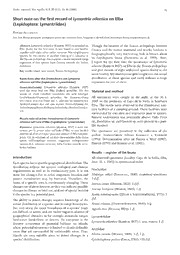
Short note on the first record of Lymantria atlantica on Elba
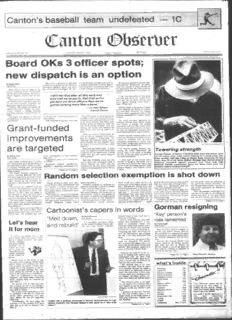
C anton €>bSerUer Board OKs 3 officer spots; new dispatch
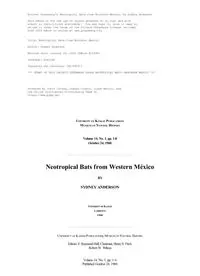
Neotropical Bats from Western Mexico by Sydney Anderson
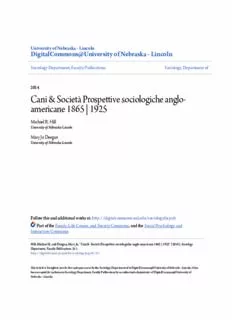
Cani & SocietÀ Prospettive sociologiche anglo-americane 1865
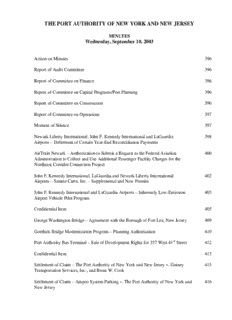
calendar of resolutions - Port Authority of New York & New Jersey
